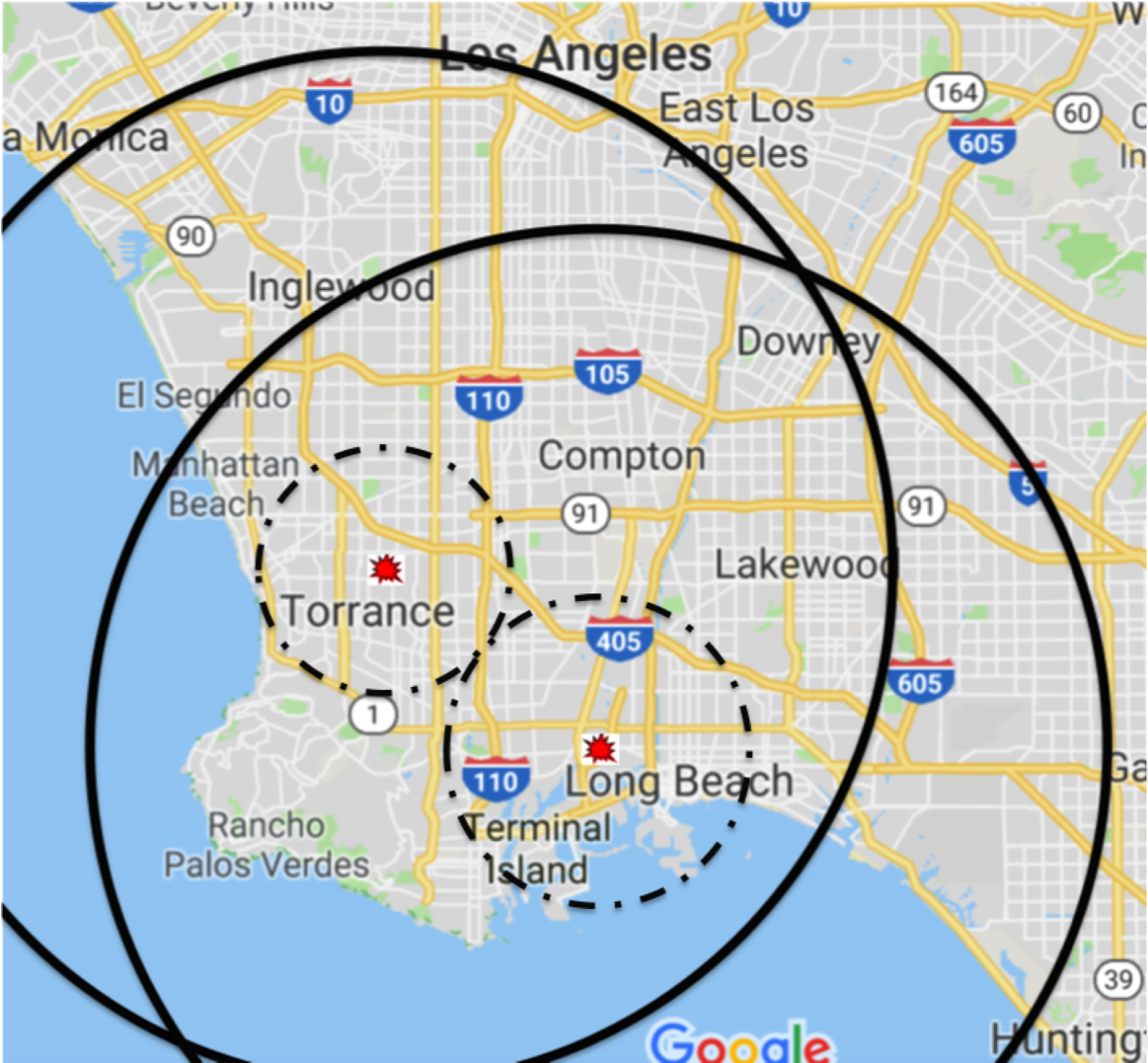We MUST phase out MHF

MHF threatens the well-being of tens of thousands of people in Torrance and Wilmington
How dangerous is hydrogen fluoride (HF) or its modified version Modified HF (MHF)? We know the answer because of a series of tests done in 1986. In one, the “Goldfish” test, 1000 gallons (8,300 lb) of HF escaped through a 2 inch hole in 2 minutes, forming a dense ground-hugging plume. Two miles downwind, the plume was still concentrated enough to kill in 10 minutes (Goldfish Study, Test 1; US EPA Acute Exposure Guideline Levels [AEGL]). The refineries store tens of thousands of gallons onsite, so a major release of MHF could injure or kill people for much farther distances.
From the official Risk Management Plans submitted by the refineries, it can be calculated that people within a range at least 3 miles away (smaller, dashed circles on map) could be at risk of serious or irreversible injury if there were a major release of MHF, with life-threatening health effects for a one-hour exposure within a range of 1.5 miles. As horrific as this would be, the range for serious or irreversible injury could be as high as 16 miles (larger circles), with life-threatening health effects within a range up to 8 miles, if all refinery safety measures fail. Since wind direction is variable, no neighborhood within 16 miles, whether privileged or disadvantaged, can imagine their area is “safe”.
During a recent refinery fire in Superior, Wisconsin, people were evacuated for 10 miles downwind because the refinery had a tank of HF. Superior has a population of 27,000 people. Evacuating much of Los Angeles County quickly would be impossible. 245,000 people live within 3 miles of the Torrance Refinery, while 153,000 People live within 3 Miles of the Valero refinery.
The Los Angeles County Department of Public Health (Public Health) “has determined that in the event of a low-probability, high-consequence release of MHF, the surrounding communities would incur severe health damage and casualties. … Due to the uniquely hazardous nature of MHF, it would be very challenging for the current health care infrastructure to respond to resulting injuries and to mitigate the extent of casualties. … Public Health urges SCAQMD to propose changes to Rule 1410 that would immediately require enhanced mitigation measures and implement a phase-out of MHF as soon as possible.” (letter dated April 2, 2109)
At the Feb. 1 meeting of the SCAQMD Board the staff presentation made it clear that MHF is far too dangerous in such a densely populated area.
The refineries have stated that they have enhanced mitigation measures engineered to prevent offsite plumes of HF. However, unforeseen events, whether earthquakes, accidents or terrorism (EAT) can overwhelm any safety measures.
To protect workers and our communities from this dangerous chemical, the SCAQMD Board must act now and pass regulations to phase out MHF. Make your voice heard by signing our petition and urge the South Coast Air Quality Management District Board to ban deadly MHF.
The AQMD Refinery Committee will be meeting on a Saturday in late June (Date and location not known yet). Please join us to speak for public safety. Email us at PVSB.SierraClub@gmail.com for details.
Blog Category:



Add new comment